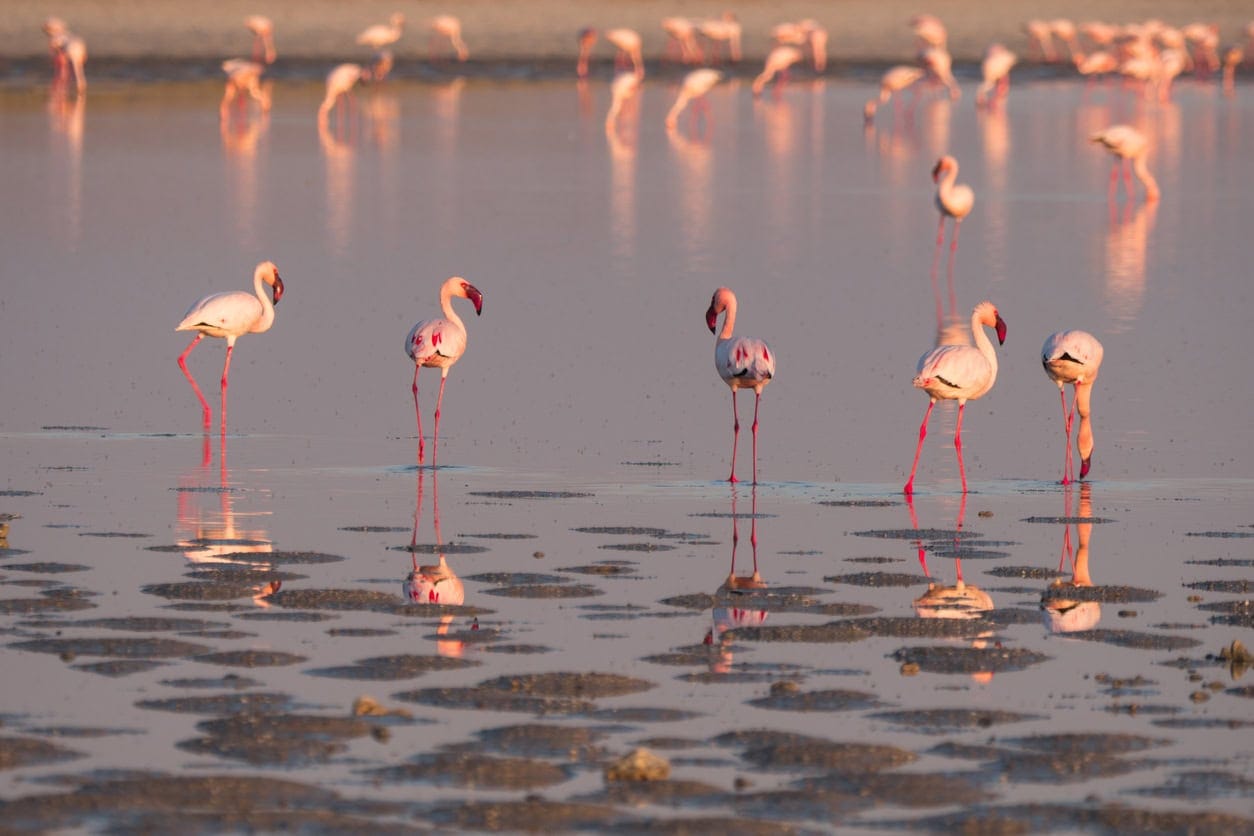The world’s largest salt flats (a flat expanse of ground covered by salt and other minerals), the Makgadikgadi Pans offer stark, breathtaking landscapes and unique wildlife experiences, including the Zebra Migration.
Tanzania and Kenya are known for the annual wildebeest migration, while Botswana is known for its annual Zebra Migration with thousands of zebras moving between the Makgadikgadi Salt Pans, Okavango Delta, and Chobe National Park. This migration spans approximately 1,000 km/621 mi, making it one of the longest mammal migrations known to man.
During the dry season, the cracked expanse of the Kalahari Basin is an otherworldly landscape that may look utterly empty of life, but come the wet season, it completely transforms to attract a wealth of wildlife.
Top Destinations in Makgadikgadi Pans

These salt pans and famous ancient group of baobab trees are must-visit spots when in Makgadikgadi Pans:
Ntwetwe and Sowa Pans: A Migration Hotspot
The Makgadikgadi Pans are made up of three pans, two of which are called Ntwetwe and Sowa. Here, the stark whiteness of the pans along with the blue sky creates a mesmerising landscape.
During the wet season, the pans flood, which draws a wealth of wildlife here. Flamingos are known to frequent the Sowa Pan, while zebras, springbok, and wildebeest travel to the Ntwetwe Pan to graze on the lush grass.
Baines’ Baobabs: An Ancient Rest Stop
Located on the Nxai Pan, Baines’ Baobabs is a group of baobab trees surrounded by the endless salt pans that provide travellers with a shaded rest area in the heat. It’s named after Victorian-era painter Thomas Baines, who himself rested under their branches and painted a picture of the scene.
Visit the iconic cluster of ancient baobab trees, whose shade many have found shelter under over the 100,000 years plus they’ve been here.
When’s the Best Time to Visit the Makgadikgadi Pans?

The dry season, from May to October, is a great time to visit the Makgadikgadi Pans for quad biking adventures and stargazing.
For optimal wildlife viewing, plan your trip for the wet season – from November to April – when the pans burst to life. This brings the zebra migration.
The animals spend the dry season in the Chobe and Okavango Delta, the latter a unique wetland system that provides the zebras with food and water throughout the dry season. Once the rainy season arrives, the zebras migrate to the grasslands that sprout up in the Makgadikgadi Salt Pans.
Animals Found in Makgadikgadi Pans

Most animals traverse this area during the wet season, when the salt pans turn into lush grasslands, perfect for grazing. During this time of the year, you can expect to see an abundance of zebras, giraffes, wildebeest, flamingos, and other migratory birds while on your Botswana safari. Elephants are occasionally seen here, as well as lions, leopards, and hyenas.
How to Get to Makgadikgadi Pans
You can land at either Maun International Airport or Kasane International Airport. From there, you can get a chartered plane to an airstrip close to the Makgadikgadi Pans National Park. You’ll then be transferred to your lodge and visit the pans during scheduled 4×4 game drives.
The ideal Botswana safari itinerary would include Chobe, Makgadikgadi Pans, and Mababe, especially in the Nxai Pan area.